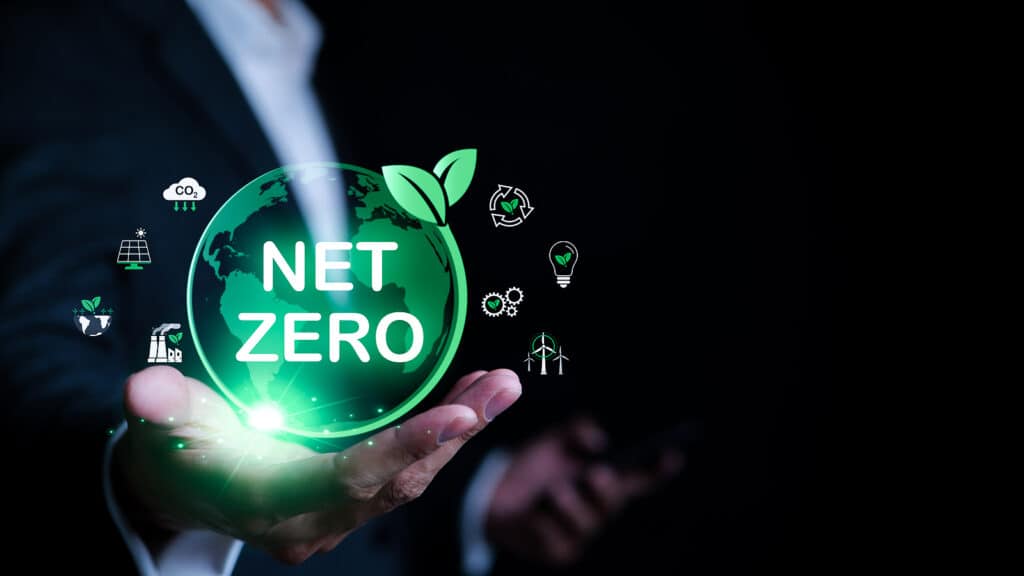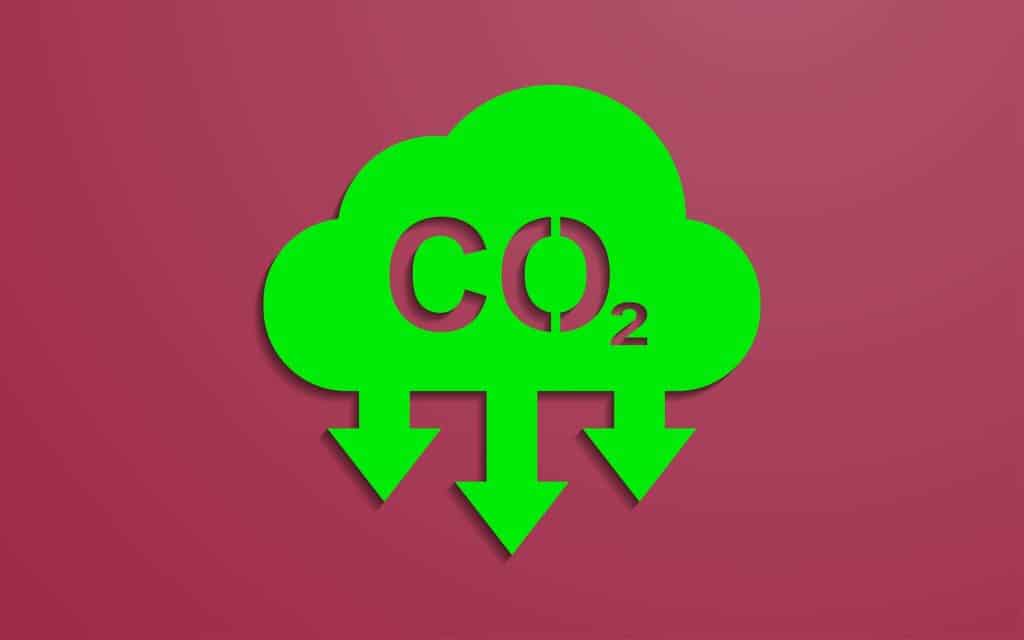The urgency of addressing the current climate crisis has never been more evident. As a company committed to providing long-term cost advantages for businesses, we recognize the significance of shifting to low-carbon energy sources. That's why we believe in the power of hydropower as a leading solution in driving the world towards a sustainable future.
Our comprehensive guide is tailored specifically to help companies understand the immense benefits of hydropower and its pivotal role in the transition to a low-carbon economy. By embracing hydropower, businesses can unlock stable electricity prices and potentially achieve substantial savings compared to conventional energy sources.
What is Hydro Power and How Hydro power Work?
Hydropower, also referred to as hydroelectric power, is a form of renewable energy that capitalizes on the energy derived from the movement or descent of water. This innovative technology operates by harnessing the kinetic energy present in the flow or drop of water and effectively converting it into mechanical energy. This mechanical energy is subsequently transformed into electrical energy through the utilization of a generator, allowing for the generation of sustainable electricity.
The process of hydropower generation begins with the construction of a dam across a river or a reservoir, creating a large water storage area. As water naturally accumulates behind the dam, it forms a reservoir, which serves as a potential energy source. When there is a need for electricity, the water is released in a controlled manner, allowing it to flow or fall from a higher elevation to a lower one.
The falling or flowing water possesses kinetic energy due to its motion and the force of gravity acting upon it. This kinetic energy is captured by structures called turbines, which are positioned in the path of the moving water. The turbines consist of blades or buckets that are specifically designed to capture the energy of the water. As the water strikes the blades, it imparts a rotational motion, initiating the mechanical energy conversion process.
Connected to the turbines is a shaft, which rotates as a result of the water's force. This rotational movement is then transmitted to a generator, which is responsible for converting the mechanical energy into electrical energy. The generator consists of a magnet and a coil of wire, known as an armature, which rotates within a magnetic field. The relative motion between the magnet and the armature induces an electrical current within the wire, generating electricity.

The Advantages of Hydro Power
Hydro power offers a multitude of advantages that make it an exceptionally appealing and vital source of renewable energy. By delving into the intricate details of these benefits, we can gain a comprehensive understanding of why hydro power plays a critical role in our global transition towards a low-carbon future.
Renewable and Sustainable Energy Sources
One of the most significant advantages of hydropower lies in its renewable nature. Unlike finite resources such as fossil fuels, hydropower relies on the natural water cycle, which replenishes water bodies relatively quickly. This perpetual cycle ensures that as long as precipitation occurs and rivers continue to flow, we will have access to an ongoing supply of hydropower. Consequently, hydropower stands as a sustainable solution capable of meeting our ever-increasing energy demands without depleting vital resources.
Minimal Environmental Impact and Low Emissions
Hydro power distinguishes itself from conventional energy sources by generating electricity without emitting harmful greenhouse gases into the atmosphere. Unlike the burning of fossil fuels, which releases carbon dioxide and other pollutants, hydro power harnesses the energy of flowing water to produce electricity. This characteristic makes hydro power a key player in combating climate change and reducing our collective carbon footprint, as it significantly mitigates the environmental impacts associated with traditional power generation.
Reliability and Predictability
Compared to other renewable energy sources like solar or wind power, hydropower exhibits a high level of reliability. The flow of water in rivers and streams is more consistent and predictable, providing a stable and continuous source of energy generation. Additionally, hydropower facilities often incorporate reservoirs that store water during times of excess flow or low demand. This stored water can be utilized during periods of high energy demand or drought, further enhancing the dependability of hydro power as a consistent energy source.
Supports Grid Stability and Flexibility
Large-scale hydro power plants play a crucial role in maintaining grid stability, especially during periods of fluctuating electricity demand. These facilities can rapidly respond to changes in power requirements, offering essential services such as frequency regulation and spinning reserve. Frequency regulation involves adjusting the output of hydro power plants in real-time to match the fluctuating demand, ensuring a steady supply of electricity to the grid.
Additionally, hydro power plants can serve as spinning reserves, ready to immediately provide additional power if sudden surges in demand or disruptions occur. This ability to quickly adapt and stabilize the grid makes hydro power projects a vital component of a robust and resilient energy infrastructure.

Hydro Power in the Low-Carbon Future
As global efforts intensify to combat climate change and reduce carbon emissions, hydro power emerges as a pivotal player in the transition towards a low-carbon future. Its inherent characteristics and capabilities make it an indispensable component of sustainable energy systems.
Mitigating Greenhouse Gas Emissions
The pressing need to curb greenhouse gas emissions, particularly from the energy sector, necessitates the adoption of low-carbon energy solutions. Hydro power, with its remarkably low emissions, assumes a crucial role in achieving this objective. By displacing traditional fossil fuel-based power generation with hydroelectricity, we can significantly curtail carbon dioxide and other greenhouse gas emissions, contributing to the global fight against climate change.
Complementary Integration with Intermittent Renewables
In addition to its emission-reducing properties, hydro power offers the unique advantage of acting as a reliable backup for other intermittent renewable energy sources like solar and wind power. While solar and wind energy generation is contingent on favorable weather conditions, hydro power provides a dependable and constant energy supply. By integrating these renewable sources synergistically, we can ensure a consistent and stable supply of electricity. During periods when solar and wind energy production is insufficient or intermittent, hydro power plants can bridge the gap and compensate for the fluctuating output. This harmonious integration optimizes the utilization of renewable resources and maximizes the overall reliability and resilience of the energy system.
Hydro Power's Storage and Flexibility
Furthermore, hydro power possesses inherent storage and flexibility capabilities that contribute to its prominence in the low-carbon energy landscape. Large-scale hydro power facilities often incorporate reservoirs, allowing for the storage of excess water during periods of high flow or low demand. This stored water can subsequently be released during periods of increased energy demand or during dry spells when other energy sources may falter. The ability to store and release water on-demand enhances the reliability and flexibility of hydro power, enabling it to adapt swiftly to varying energy needs and grid requirements.
Sustainable Development and Regional Benefits
The adoption and expansion of hydro power companies have profound implications beyond mitigating climate change. Hydroelectric projects can contribute to sustainable development by providing job opportunities, fostering economic growth, and improving energy access in remote areas. Additionally, the construction of the first hydro electric power plant can lead to the creation of reservoirs, which serve as multipurpose resources for activities such as irrigation, water supply, and recreation, benefiting local communities and ecosystems.
The Road Ahead for Hydro Power
While hydropower boasts numerous advantages, it is not without its challenges. Environmental concerns surrounding the alteration of water ecosystems and the displacement of local communities necessitate careful consideration and innovative solutions. Fortunately, ongoing advancements in technology and sustainable practices are paving the way for the development of low-impact and highly efficient hydropower projects.
Embracing Smaller-Scale Hydropower
To address the environmental impacts associated with large-scale hydropower projects, the industry is shifting its focus towards smaller hydropower installations and run-of-river systems. These approaches aim to generate electricity while minimizing disruptions to natural river flows. By opting for smaller projects, developers can significantly reduce the ecological footprint of hydropower, preserving the integrity of aquatic habitats and minimizing the displacement of local communities. Run-of-river systems, in particular, allow for the extraction of energy from flowing water without the need for large reservoirs, further mitigating the ecological and social impacts traditionally associated with hydropower.
Revolutionizing Turbine Designs
Innovation in turbine design is at the forefront of efforts to enhance the sustainability of hydropower. Advanced turbine designs aim to maximize efficiency while minimizing the detrimental effects on aquatic life, such as fish passage and habitat fragmentation. These cutting-edge technologies enable a more harmonious coexistence between hydropower generation and the preservation of aquatic ecosystems. For instance, fish-friendly turbine designs incorporate features that facilitate safe fish passage through turbines, reducing the risk of injury or mortality. By minimizing the impact on aquatic life, these advancements not only promote sustainable hydropower but also strengthen its potential as a leading contributor to the low-carbon future.
Monitoring and Adaptive Management
The industry is also recognizing the importance of monitoring and adaptive management in ensuring the long-term sustainability of hydropower projects. Environmental monitoring programs are put in place to assess and mitigate potential impacts on water quality, aquatic habitats, and wildlife. By closely monitoring the ecosystem responses to hydropower operations, stakeholders can make informed decisions and implement adaptive management strategies to optimize project performance and minimize environmental effects. These measures reflect a growing commitment to responsible and sustainable hydropower development.
Collaboration and Stakeholder Engagement
Addressing the challenges associated with hydropower requires close collaboration and meaningful engagement with stakeholders. This includes consulting with local communities, indigenous groups, environmental organizations, and regulatory bodies to ensure that project designs incorporate their perspectives and concerns. By actively involving stakeholders throughout the project lifecycle, developers can foster transparency, promote sustainable practices, and build trust within the affected communities.
FAQs About Hydro Power
Q1: What is hydro power?
A: Hydro power, also known as hydroelectric power, is a form of renewable energy that generates electricity by harnessing the energy of moving or falling water.
Q2: How does hydro power work?
A: Hydro power works by converting the kinetic energy from flowing or falling water into mechanical energy. This mechanical energy is used to turn a turbine, which spins a generator to produce electricity. The generated electricity is then transported through power lines to be used in homes, businesses, and industries.
Q3: What are the advantages of hydro power?
A: Hydro power has several advantages. It's a renewable and sustainable source of energy, meaning it can be replenished naturally over a short period. It also produces electricity with minimal carbon emissions, making it an environmentally friendly energy source. Furthermore, hydro power dams is reliable and predictable, with water flows that can be stored and used when needed, and it supports grid stability.
Q4: What role does hydro power play in the transition to a low-carbon future?
A: Hydro power plays a significant role in the transition to a low-carbon future due to its low emissions profile. By replacing fossil fuel-based power with hydroelectricity, we can reduce our carbon emissions significantly. Moreover, hydro power can be integrated with other renewable sources like solar and wind to ensure a steady supply of electricity.
Q5: What are the environmental impacts of hydro power?
A: While hydro power is a clean energy source, it does have potential environmental impacts. These include changes to water ecosystems and displacement of local communities due to dam construction. However, the industry is continually innovating and moving towards more sustainable practices, like small-scale projects and advanced turbine designs, to mitigate these impacts.
Q6: How does hydro power compare to other renewable energy sources like solar and wind?
A: Hydro power is a more reliable and predictable source of renewable energy compared to solar and wind. The water flow in rivers and reservoirs is predictable and can be stored for use when demand is high or during periods of drought. Moreover, hydro power can act as a backup when the supply from solar and wind energy is low, thereby enhancing the reliability of the overall energy system.
Q7: What is the future of hydro power?
A: The future of hydro power looks promising. Despite its challenges, the continual advancements in technology and sustainable practices, such as small-scale projects and advanced turbine designs, are paving the way for more sustainable and efficient hydro power generation. It is expected to play a significant role in our transition to a low-carbon future.
Conclusion
As I reflect on the wealth of information about hydropower and its crucial role in the transition to a low-carbon future, I am truly inspired. The urgency of addressing the climate crisis has never been more evident, and as a company dedicated to providing long-term cost advantages for businesses, I am deeply committed to advocating for sustainable solutions like hydropower.
Hydropower, with its renewable and sustainable nature, stands out as a beacon of hope in the quest for a greener world. Its minimal environmental impact and low emissions make it a clear choice for reducing our carbon footprint and mitigating the effects of climate change. The reliability and predictability of hydropower, coupled with its ability to support grid stability, make it an indispensable asset in our energy infrastructure.
Sources:

